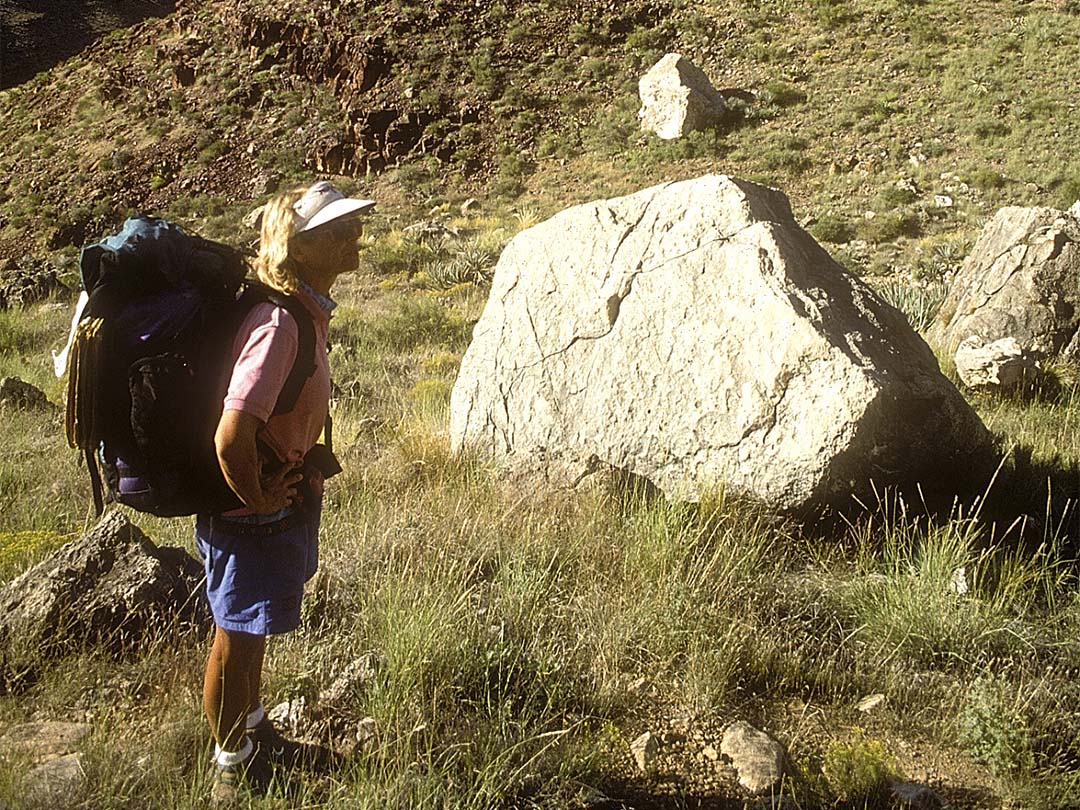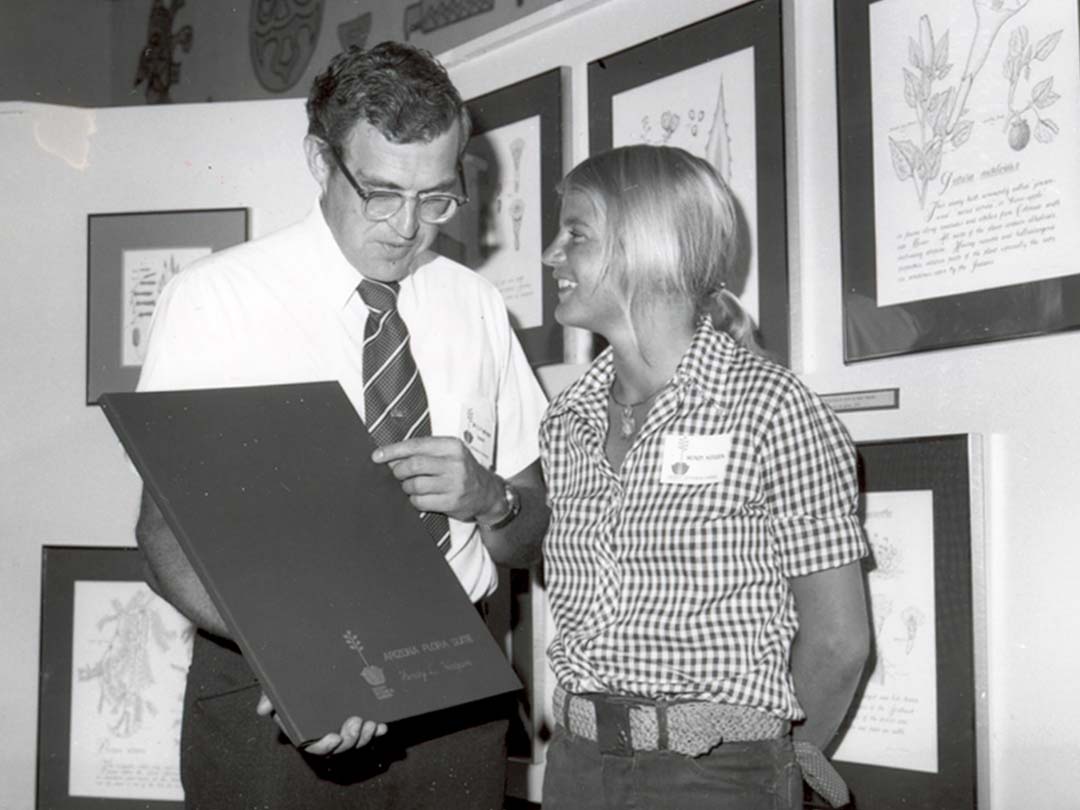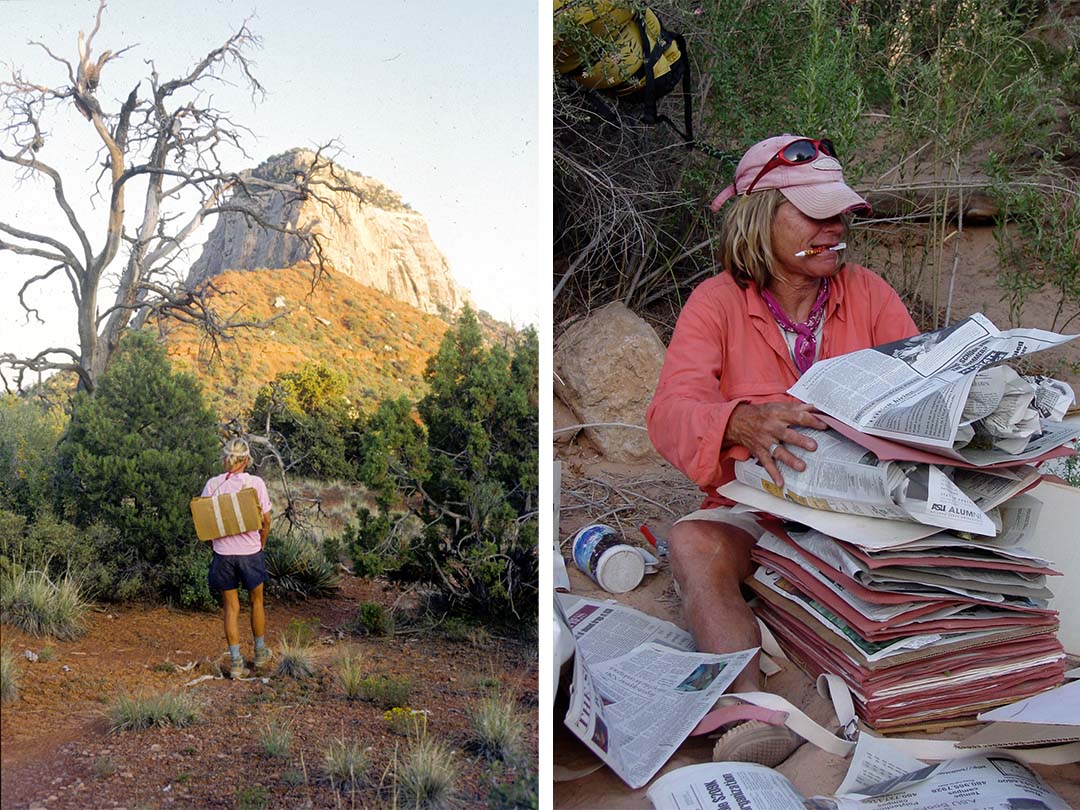Photo by Kate Watters
How many people can say they have worked for the same institution for 50 years?
Wendy Hodgson, Herbarium Curator Emerita and Senior Research Botanist, is that rare individual at Desert Botanical Garden who came to a place for a job and stayed for a career.
Hodgson is arguably a world expert on the flora of the Grand Canyon. For more than three decades now, she has researched, documented and helped conserve the Grand Canyon’s 1,900-plus plant species, including agaves, cactus and yuccas.
During Hodgson’s tenure, she has discovered and named nine new agave species, including one from the Grand Canyon and another from southern Arizona that was recently described with Garden research botanist and colleague Andrew Salywon. At least two additional ones will be described in the future. Wendy also has discovered and co-authored two additional species of blazing star (Mentzelia species) from the Grand Canyon.

Photo by Dave Ganci
“It’s always an adventure,” Hodgson said. “Botanizing in the Canyon is no walk in the park, so to speak, especially when studying spiny, hard to access plants. The challenges are many but they are worth it. I enjoy that I get to share and discover more details about the Grand Canyon’s diverse ecosystem to the world.”
That extensive research and knowledge Hodgson collected over the years help served as inspiration for her award-winning book “Food Plants of the Sonoran Desert,” which was first published in 2001 and continues to be an essential resource in the ethnobotanical world.
She continues to be inspired by the botanists who came before her, especially women like Elzada Clover and Lois Jotter who back in 1938 risked life and limb running the Colorado River to study and collect Grand Canyon plants. They and others laid the groundwork from which botanists like Hodgson build upon. And such work requires collaboration — none of Wendy’s work in the Canyon could be done without the help from Grand Canyon National Park and Hualapai Nation, as well as many other Canyon aficionados.
“The Grand Canyon is more than spectacular views, amazing geology and weird squirrels!”
And it’s not just the Grand Canyon, Hodgson has seen the Garden blossomed over the years to the premier institution it is today. She started working here when staff had makeshift office trailers outside of Webster Auditorium.

“I really liked the Garden, it was a cool area. But my time was mostly spent sequestered in the little building that was the original herbarium. I was working a few days a week doing drawings for Dr. Howard Scott Gentry (the Garden’s first research director) and his book, Agaves of Continental North America,” she said.
During her time here, she became more acquainted with the Garden.
“After finishing my master’s degree, I was definitely out on the Garden grounds more, working as a horticulturist. At the time there were about a total of 10 staff members, and everybody did everything. I drove a tractor to help put in a fire lane!” she said. “Over time I worked in horticulture, education and the art department.”
Hodgson reminisced about a 1980s event called Cactus and Art, started by volunteer librarian Lillian Diven. Cars lined down Galvin Parkway to Van Buren waiting to get into the Garden. Wendy helped direct traffic.
When Garden Herbarium Curator J. Harry Lehr noticed Hodgson’s interest in collecting plants, he began taking her out in the field. Hodgson stepped into the curator position when Lehr retired. Then, the herbarium housed about 25,000 specimens. Today, the count is fast approaching 100,000, with close to 40% of those specimens collected by Hodgson.

Photo by Dave Ganci (left); Right photo by Lisa Hahn (right)
“The Plants and People of the Sonoran Desert trail was an amazing project. The Garden was ahead of its time in 1988 recognizing the significance of indigenous cultures. In 1983, the Garden received accreditation from the American Alliance of Museums. In 1985 the Garden became a charter member of the Center for Plant Conservation (CPC). Rare plant work had been happening since very early in the Garden’s history, but the CPC provided a platform for being recognized and an opportunity to work with other institutions. The 2010 designation of the cactus and agave family collections as National Collections was highly significant and joining with the International Union for the Conservation of Nature in 2016” she said.
As for her thoughts on the Garden’s future, Wendy hopes the critical research and conservation work will continue for future generations to come.
“The Garden has always stayed true to its great mission and will only become more important,” she said. “The Garden has to play a big part in research and be a model for living in environments like Phoenix as a desert city. As our environment shifts, we are in an important place to be a laboratory to understand what is happening and what will or could happen.”
